Our view at Stack - Pipedrive is a robust CRM platform, offering automation, contact data collection, webhooks, AI-powered sales assistant, email communications, email marketing, and customisable sales pipeline workflows.
In business, staying ahead of the competition means adapting to new techniques, products and technology. However, training employees can be expensive and time-consuming, especially with traditional in-person methods.
A learning management system (LMS) solves these problems and helps you deliver consistent, high-quality training to employees wherever they are.
In this article, you’ll learn what an LMS is and how it can benefit your business. You’ll also learn about some of the top LMS platforms companies use to meet their goals.
What is a learning management system?
A learning management system is software that helps create, manage and track online training processes. Businesses, schools and higher education institutions use this technology to facilitate learning and professional development.
LMS platforms let you train employees online instead of paying for instructors, travel and a venue. They also offer consistent training regardless of location, which is vital for companies with employees across time zones.
There are many types of LMS solutions, including:
-
Open source. These learning platforms are free to use and customizable. They’re flexible and integrate with other tools, though setting them up may require technical knowledge.
-
Cloud-based. Cloud-based platforms provide easy online access from any location. They’re suitable for businesses that need quick deployment and regular updates with less IT expertise.
-
On-premise. Companies can install an on-premise LMS on their servers so learners can access them online or offline. They provide better control over data security, ensuring sensitive information remains within a company’s systems.
-
Commercial or enterprise. Commercial software as a service (SaaS) LMS solutions are subscription-based options for large organizations. They offer advanced analytics, integration capabilities and robust customer service.
Recommended reading

How to Develop and Train Your Sales Team
What are the benefits of an LMS?
LMS platforms offer a range of benefits over traditional instructor-led training methods, including:
Improved employee job performance
According to 360Learning research, employees cited “online training provided by my employer” as the top reason they acquired a new skill that helped them do their jobs better.
We asked: Please think about when you last acquired a new skill that helped you do your job better. What helped you master this new skill?
1. Online training provided by employer
2. Learning directly from my peers and colleagues
LMS software provides access to up-to-date training materials that help your employees gain new skills and knowledge. Structured learning paths and interactive content (like videos, simulations and quizzes) make training more engaging and memorable. These factors allow your employees to retain and apply the skills they learn, boosting job performance.
An LMS also ensures all employees receive the same quantity and quality of training. This consistency helps maintain standards across large teams while aligning employees with the company’s goals and procedures.
Support for employee learning goals
Employees want opportunities for professional growth and advancement. According to GetApp research, 92% of employees say it’s important that their companies offer them learning opportunities.
With an LMS, you can provide a range of training courses that benefit your employees’ current roles and future career aspirations.
Users can also access training materials anytime and anywhere so they can fit these tasks into their schedules. This flexibility encourages self-paced learning while ensuring training doesn’t disrupt daily work.
Note: To further enhance the learning experience, implement a mentorship program alongside your LMS. Pairing employees with mentors gives them personalized guidance and additional support, which can boost their engagement and development.
Reduced turnover
According to LinkedIn research, organizations are working to improve retention by providing learning opportunities.
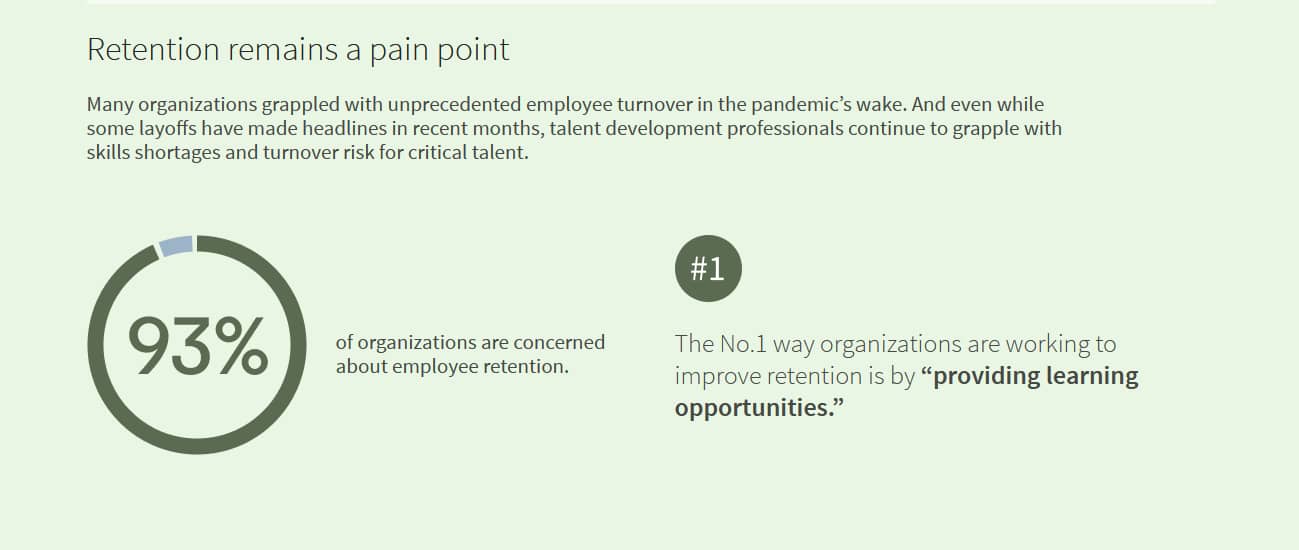
Offering these development options shows that your company invests in employee growth and well-being. This investment boosts team morale and job satisfaction, making people more likely to stay with your organization.
An LMS can also outline a clear path to career progression. Employees with opportunities to advance their careers are less likely to look for new jobs.
Finally, learning management systems are also helpful for onboarding. With structured onboarding programs, new employees can get up to speed quickly. A smooth onboarding experience reduces turnover rates and overall frustration among new hires.
Accessible, cost-effective and scalable learning
LMS platforms make training accessible from any device with an internet connection, which is convenient for remote and spread-out teams.
Digital learning also eliminates the need for classrooms, travel and printed materials, reducing the costs associated with traditional training methods. You can invest these savings into more diverse training programs.
Finally, LMS platforms scale quickly to accommodate a growing workforce. As your company expands, you can add more employees to the system and roll out new courses.
Personalized and trackable training content
Modern LMS platforms include adaptive educational technology that personalizes the experience based on a learner’s preferences. This customized approach can keep employees invested in their learning journey.
LMS solutions also provide detailed reports and analytics on progress, strengths and areas for development. Managers can tailor future initiatives to address skill gaps, ensuring that training is practical and aligns with performance objectives.
You can update learning materials to reflect new information or best practices so employees always have access to the most current knowledge.
Recommended reading

Top 10 sales training programs to boost sales in 2024
What can you use an LMS for in business?
From onboarding new hires to upskilling current staff, an LMS is a comprehensive way to meet your organizational needs. Here’s how companies use training management systems.
Onboarding
An LMS automates training delivery and tracks progress to ensure all new hires meet the necessary standards. Here’s how:
-
Structured introductions. Welcome messages, interactive walkthroughs and video greetings from team members can make new employees feel at home.
-
Compliance training. New hires can complete mandatory compliance courses like workplace safety, data protection and anti-harassment policies through an LMS. The platform can also provide reminders to ensure employees complete these courses within the required timeframe.
-
Role-specific tasks. You can create modules to help new hires understand their responsibilities and the tools they’ll use.
-
Progress tracking. Managers can use the LMS to monitor progress through onboarding and find areas where employees need extra support.
Sales training
Sales training improves reps’ skills and knowledge to help them sell products more effectively. With scalable, interactive learning modules and assessments, your team can learn new techniques and stay current on product updates.
An LMS can host comprehensive resources about your company’s products or services, including detailed specifications, benefits, competitive differentiators and use cases. Sales teams can access this information anytime to stay updated.
You can also develop interactive modules to educate sales teams about effective sales tactics, customer engagement strategies, sales negotiation skills and closing methods. Role-playing simulations and real-world scenario exercises enhance learning and application.
Skills development
Skills development enhances employee capabilities and soft skills, from project planning to conflict resolution. A structured, on-demand learning environment with personalized content and tracking supports continuous development and professional growth.
You can also implement accredited programs through an LMS, validating employee skills and knowledge with certifications that contribute to personal growth while adding value to the organization.
Regular assessments and quizzes gauge learning programs’ effectiveness and employee skill levels. This feedback loop enables continuous improvement and ensures users develop the skills needed for success.
Customer training
Customer training can help users get the most out of your products, boosting the customer experience and improving your brand positioning. Customers who understand how to get the most value from your product will likely use it long-term.
An LMS can host detailed product tutorials and how-to guides, enabling users to understand and use products effectively. These tutorials can include video demonstrations, user manuals and webinars.
Granting access to these training resources whenever needed improves customer relations. This on-demand approach ensures users can learn quickly, revisiting materials as needed.
The LMS might also include forums, Q&A sections and chat support where customers can ask questions and share feedback. This interaction helps resolve their queries and provides valuable insights to improve training content.
Recommended reading

Effective sales onboarding: How to get it in 7 steps
5 of the best learning management systems
Choosing the right LMS vendor can improve your training programs and employee development. Here are five learning management system providers, each offering unique features that cater to different educational strategies:
1. 360Learning
360Learning is a collaborative LMS designed to help teams optimize training programs quickly. With built-in social learning features, employees can create and share content easily.
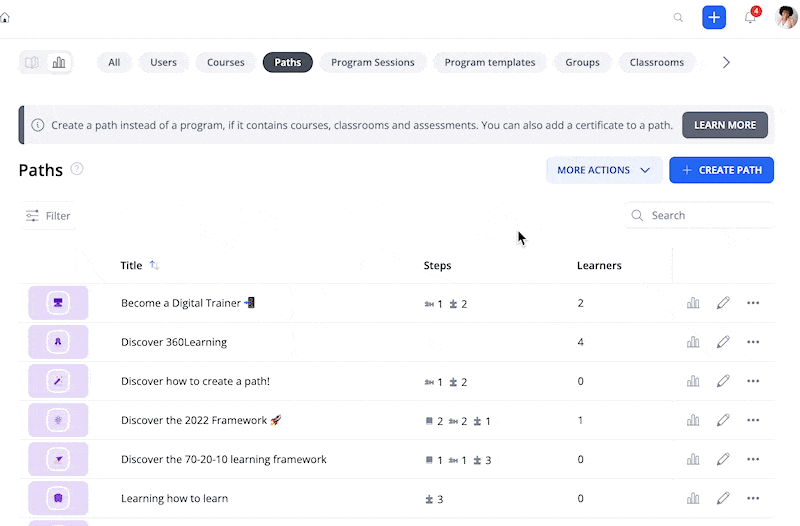
Key features of 360Learning:
-
Collaborative authoring tools
-
Off-the-shelf content creation
-
Built-in feedback loops
-
Analytics and reporting
-
Integration with various platforms, including Microsoft Teams
-
Mobile device support
360Learning costs $8 per user per month for under 100 users. For over 100 users, 360Learning offers custom pricing based on the required features. Contact their sales team for a quote.
2. TalentLMS
TalentLMS is a simple web-based learning and development (L&D) solution. It’s ideal for small and medium-sized businesses (SMBs) because of its intuitive user interface, flexible pricing and comprehensive features.
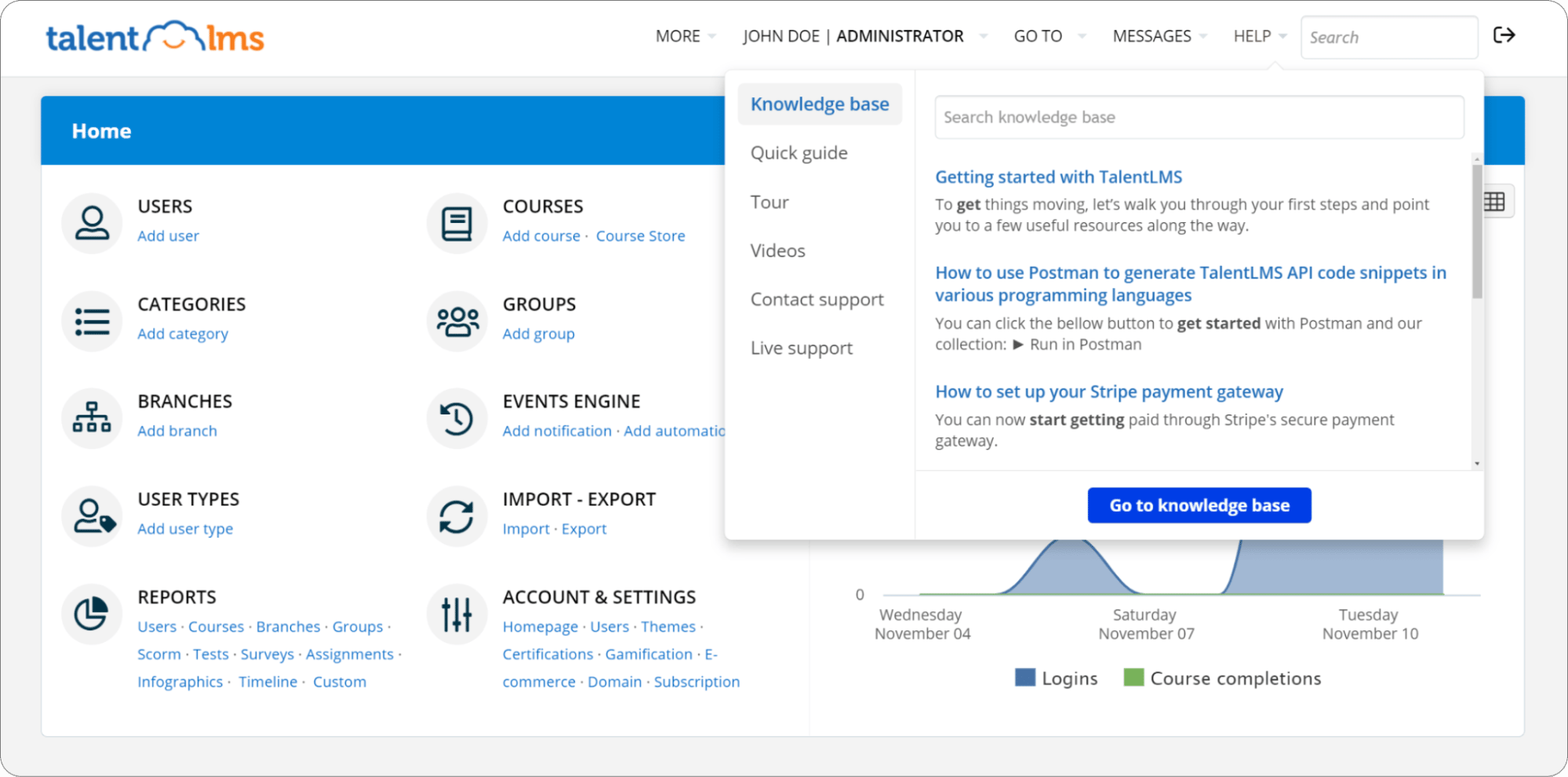
Key features of TalentLMS:
-
Customizable courses with AI content generation
-
SCORM, xAPI and cmi5 support
-
Assessments engine to create tests
-
Reporting and analytics
-
Integration with third-party learning tools like Adobe Captivate
TalentLMS offers four pricing tiers starting from $69 monthly for up to 20 users. Prices increase depending on the number of users and features you need.
3. Anthology (formerly Blackboard Learn)
Anthology is a powerful learning management system software for educational institutions and corporate training environments. It’s ideal for large companies that require a scalable solution to manage their learning and training programs.
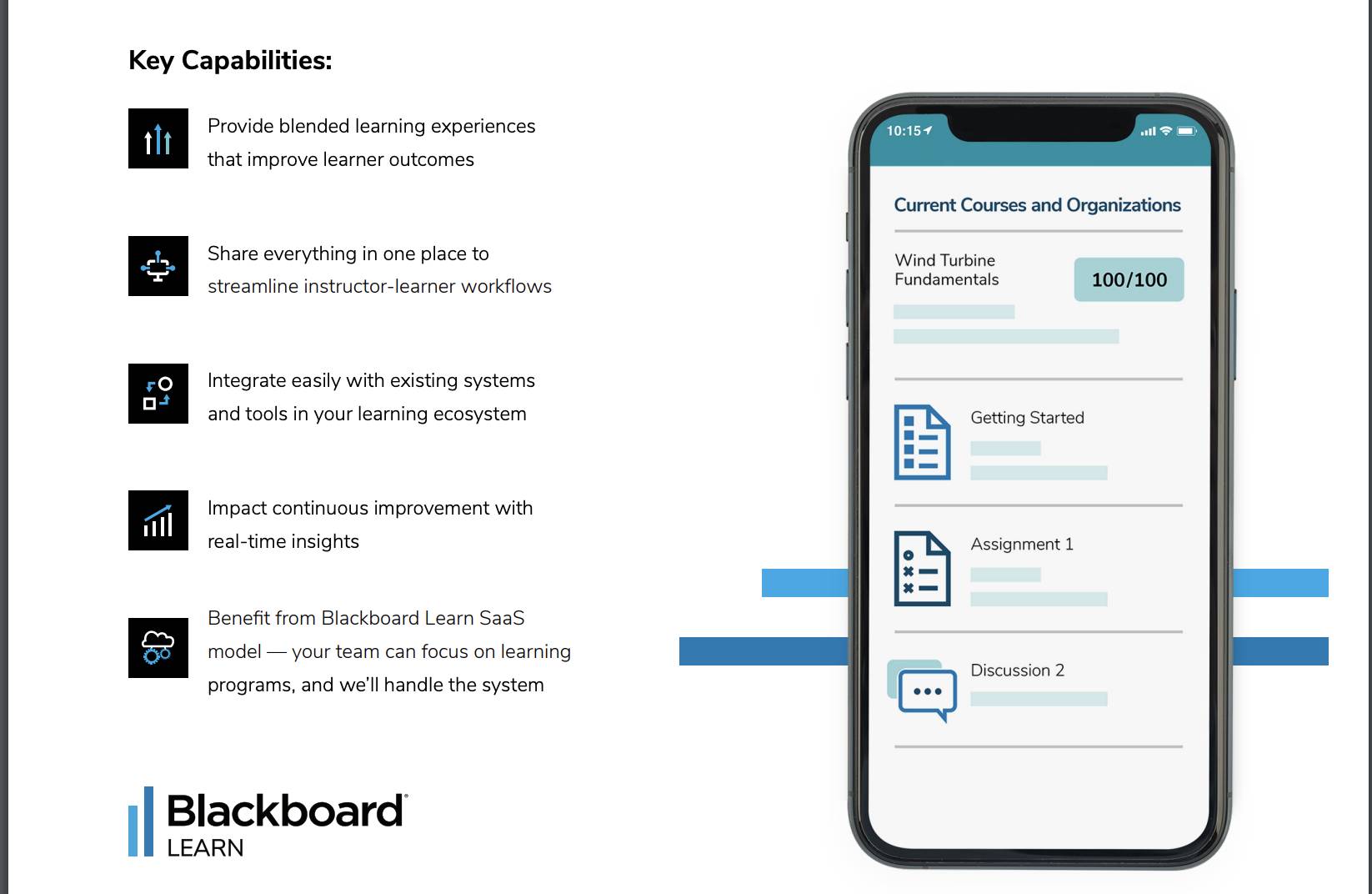
Key features of Anthology:
-
Course creation and management
-
Advanced analytics
-
Mobile app accessibility
-
Personalized learning paths
-
Automatic translation into 100+ languages
-
Integration with other educational tools and HR software
Anthology offers custom pricing based on institutional needs and user numbers. Contact their sales team for detailed pricing information.
4. Moodle Workspace
Moodle is a low-cost, open-source platform with extensive customization options, making it adaptable and budget-friendly. Businesses of all sizes use Moodle to create custom learning environments for employees and customers.
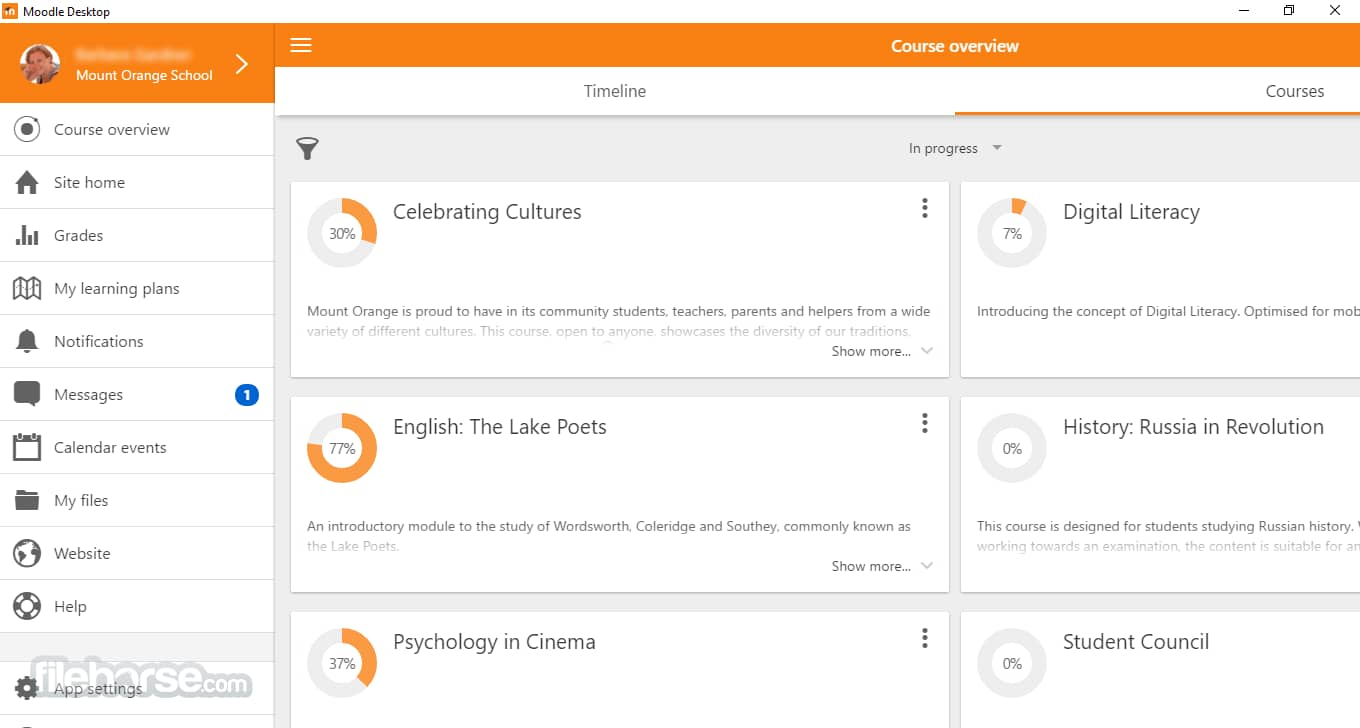
Key features of Moodle:
-
Open-source and customizable
-
Extensive plugin library and API support
-
Mobile learning support
-
Custom analytics and reporting tools
-
SCORM and LTI-compliant
-
Community support
Moodle is free, but hosting, plugins and custom development may cost extra. MoodleCloud offers paid hosting plans.
5. Docebo
Docebo is an AI-driven corporate LMS with integrations tailored to corporate training and enterprise-scale learning. Docebo’s enterprise learning management system is best for organizations leveraging advanced technology to deliver personalized, scalable and engaging training programs.
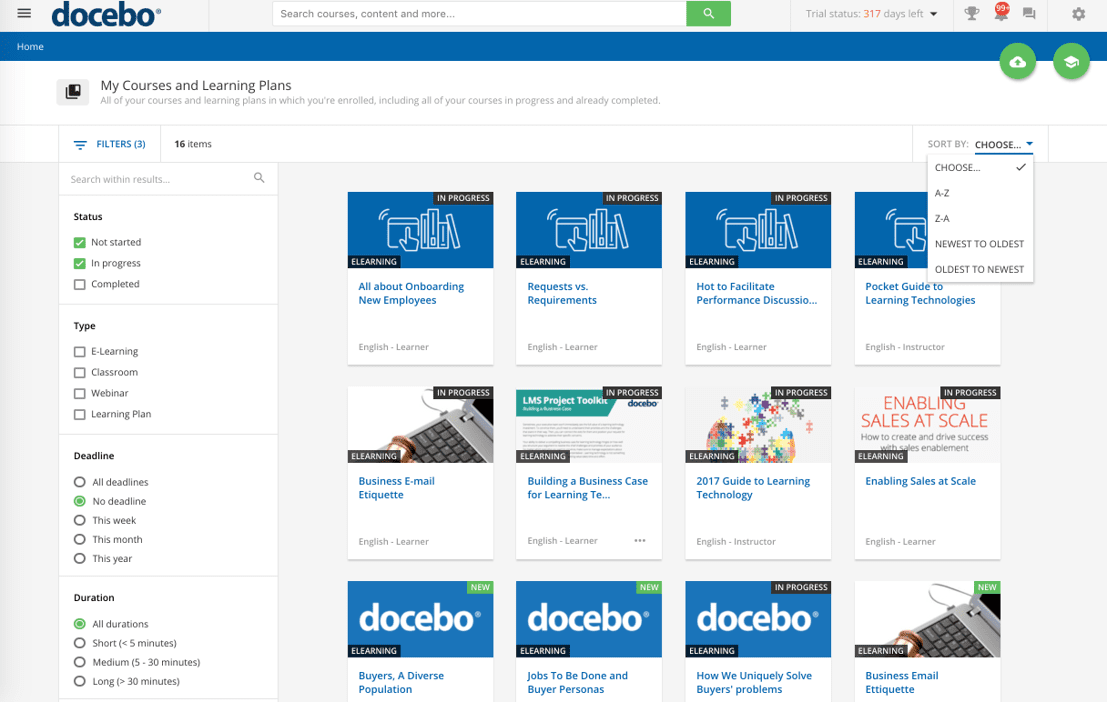
Key features of Docebo:
-
AI-powered features
-
Social and informal learning
-
Extended enterprise training
-
Robust reporting and analytics
-
Integration with enterprise ecosystems
Docebo offers custom pricing based on organizational needs and the number of users. Visit their website for a personalized quote.
6 key LMS features to consider
When choosing an LMS system for your company, consider which features will impact your training success. Here are six essential functions to look for:
-
User-friendly design. Intuitive interfaces and easy navigation make it simple for users to access and complete their training modules. They enhance the user experience and reduce issues for both admin and learners.
-
Reporting and analytics tools. Ensure your LMS includes tools to track progress, completion rates and performance metrics. These analytics provide valuable insights for improving course management, ensuring compliance and identifying skill gaps.
-
Customization options. A customizable LMS means you can add branding, formats and training requirements. It ensures the LMS meets your organization’s needs and enhances user engagement by making it more relevant and personalized.
-
Integration capabilities. Look for the ability to integrate with other tools, including HR management systems, customer relationship management (CRM) software and content management systems (CMS). This capability streamlines tasks and data flow between your systems.
-
Mobile accessibility. Accessing your LMS via smartphones and tablets lets learners complete e-learning modules on the go. This flexibility is crucial for remote and field employees, improving access and completion rates.
-
Support options. Include both self-service and traditional options. FAQs and knowledge bases help customers resolve issues quickly. Live chat, email and phone support let you provide hands-on assistance for more complex issues. You can then solve problems faster, ensuring smooth operations and limiting downtime.
Download our sales pipeline course e-book
In the Sales Pipeline Course, Timo Rein, co-founder of Pipedrive, teaches you how to make more sales with exclusive advice and insights in 11 valuable lessons.
How to get the most out of your online learning management system
Here are practical tips and strategies to help you get the most out of your online LMS and ensure it becomes an invaluable tool for your organization’s growth and development.
Integrate with other tools and platforms
Enhancing your LMS with integrations helps create a seamless, data-driven learning experience with relevant training aligned to business goals. For example, integrating your LMS with your CRM can enable you to:
-
Enroll sales reps into the LMS automatically. Use your sales reps’ details from the CRM to place them in relevant LMS courses according to their roles and needs.
-
Track learner performance and generate reports. Generate comprehensive reports on metrics like registration, training quality and completion rate to get valuable insights about your sales reps.
-
Deliver targeted employee training. Create impactful courses based on market demands and individual needs by analyzing trends from your CRM database, including sales metrics and conversations.
The same applies to other platforms, including human resource management systems (HRMS), content management systems, e-commerce CRM solutions and collaboration platforms. Leveraging these integrations helps reduce the manual work required to enhance your training programs.
Track and adapt to learner progress
When using an LMS, ensure you measure program effectiveness and identify training gaps. Your system should record learning activities automatically, including course enrollments, module completions, quiz scores and time spent on each activity. Monitoring these metrics closely allows you to track individual and group progress to see who needs additional support.
To track learner progress:
-
Review dashboards and reports regularly to monitor engagement, progress and completion rates
-
Set up automated alerts for key metrics like low quiz scores or incomplete modules
-
Use assessments to get immediate feedback on key learning areas
You can create customized learning paths for each employee based on this performance data.
Update and optimize learning content regularly
Keep your training relevant and effective by refreshing and improving content consistently based on feedback and evolving business needs.
Review your course materials and ensure they align with organizational goals. If possible, ask subject matter experts at your company to audit the content and identify outdated information. Input a structured review process (quarterly or bi-annually) to keep the material fresh.
Along with regular reviews, gather employee feedback to find areas for improvement. Distribute surveys and forms to identify material that isn’t effective or clear. Adjust online course content, delivery methods and support mechanisms to meet learner needs.
You can also integrate feedback loops into the LMS, allowing users to share their thoughts as soon as they complete a module.
Encourage user engagement with gamification
Gamification adds game-like elements to your LMS to boost user engagement and motivation. Incorporating elements like points, badges and challenges can make the learning experience more interactive and enjoyable.
Here are some ways to encourage engagement with gamification:
-
Introduce points and rewards. Award points for completing modules, participating in discussion forums or attaining high scores. Rewards can range from virtual badges to real-life incentives like gift cards.
-
Create leaderboards. Leaderboards show top performers, creating a sense of competition to motivate your employees. Use them to highlight different aspects of learning like most active, highest scores and most improved.
-
Encourage social interaction. Group challenges and peer recognition can increase engagement. Foster a community with team-based competitions and encourage collaboration through social features within the LMS.
Integrating these gamified elements creates a learning environment that keeps employees invested in their education and professional development.
Recommended reading

12 sales games to level up your team and close more deals
Final thoughts
An LMS solution can revolutionize how your sales team learns, grows and performs. With streamlined onboarding, continuous skill development and performance tracking, an LMS ensures your sales team stays ahead of the competition.
Ready to elevate your sales team’s performance? Discover how Pipedrive CRM can integrate seamlessly with your LMS to maximize efficiency and improve results. Start your free trial today.
If Pipedrive is of interest and you'd like more information, please do make contact or take a look in more detail here.
Credit: Original article published here.
